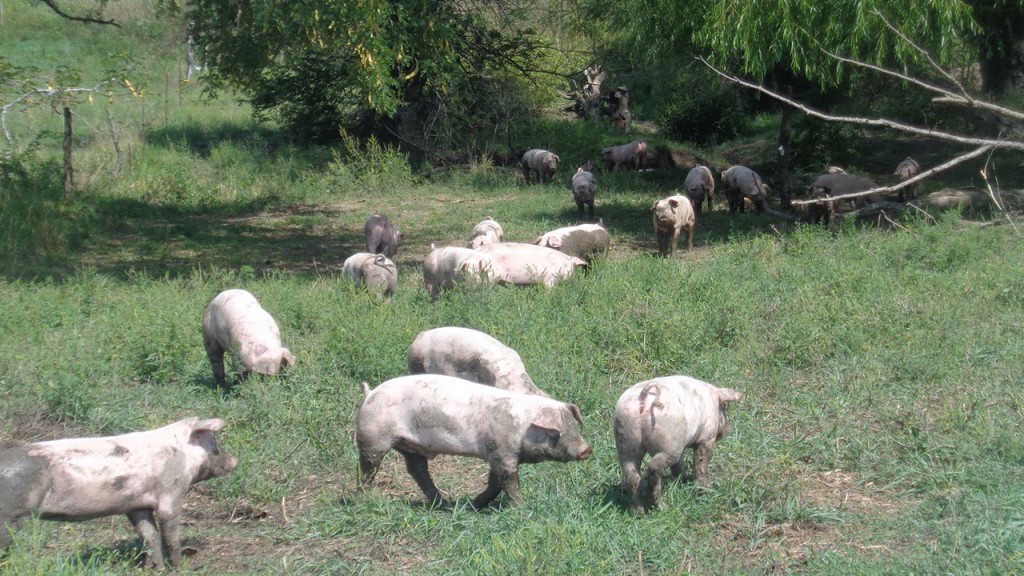One of the strategies we use at Singing Prairie Farm to produce the most nutritious and sustainable pork on the market today is to grow some of our own feed.
We aren’t just talking about corn here. On our home farm, we have four separate planting seasons. Every spring, I mark March 21st on the calendar as the first planting date. This seeding is done when the land is just barely returning after the long winter.
The grass is still brown. The trees are black-barked and leafless. The only notice we have that spring is coming back is the birds.
I don’t know where they all go for the winter, but one species at a time they come back.
First, come the cardinals, then the robins, then killdeer, then western meadowlarks, then redwing blackbirds and finally eastern bluebirds and purple martins. Several new bird species arrive every week until on the first sunny day in April; then the mornings are a sweet and raucous circus of birdsong.
It is with the arrival of the western meadowlark that we typically plant our spring crops.
Some Native Americans groups are said to have planted a “three sisters” garden every year. It was comprised of: corn, a tall, vertically growing member of grass family; squash, a horizontally growing vine with leaves broad enough to shade out weed competition; and beans, a legume which can take nitrogen out of the air and deposit it in the ground. When grown together, these three sisters offer a variety of nutrition and amino acids which aid human health. Their growth habits are also complimentary from a farming perspective.
Drawing heavily on that traditional inspiration — and on forage techniques used by dairy farmers — we came up with our own three sisters for pork production.
Our mix is a combination of organically grown forage oats, the vertically growing member of the grass family in this system; turnips, the broadleaf species to help us shade out weed pressure; and field peas, the legume helping us to fix nitrogen in the soil.
Since we eschew commercial fertilizer, our planting mix is somewhat heavy on the peas. The nitrogen the peas deposit in the soil will remain for the next time this field will be planted in the fall.
Just like the traditional Native American three sisters gardens, our spring forage trio offers a mix of nutrition and amino acids.
While most of our farming at Singing Prairie Farm is done with teams of Belgian draft horses, pulling a 3,000-pound no-till drill with horses is something that we haven’t learned how to do yet. This year we borrowed a neighbor’s John Deere tractor and another neighbor’s modern no-till drill.
It has been a fairly wet spring so far, so when four sunny days in a row showed up, I knew the window of planting was open, but only for a moment. The day we picked to plant, the weather forecast was predicting four inches of rain starting at 9:00 pm and continuing on and off all week. If we were going to plant a spring mix, we had to do it then.
The sun set about halfway through the planting session. I turned on the headlights and finished well after dark as raindrops speckling the windshield. That night, lying in bed and listening to the wind howl and the rain pour down, I felt very satisfied with the day’s labors. Not only were all those cover crop seeds safely waking up in the ground, but also the rain officially closed out the spring planting season at Singing Prairie Farm.

Spring planting is just one of many planting seasons we engage in over the span of the growing season. The pigs that graze this impenetrable jungle of peas, turnips, and oats; in June will go on to graze several other mixes before the season ends in November. We have begun this year’s circle of life on Singing Prairie Farm…a holistic web that includes pigs, turnips, cows, peas, clover, farmers, apples, pumpkins, families in faraway cities, and the cheerful springtime song of the western meadowlark.




